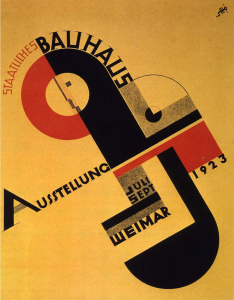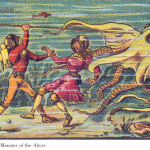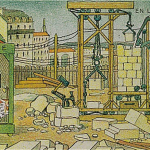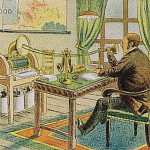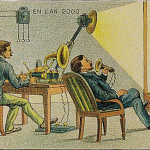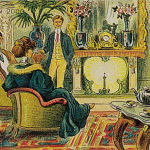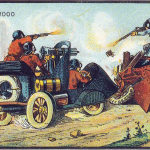The 2017 Solar Eclipse was a spectacular display of how important and influential the moon and the sun is in our life. With our small existence in the universe, this event is a relatively mundane compared to a supernova, black hole or any other compelling enormous anomalies the cosmos displays. The 2017 Solar Eclipse is a local wonder for us the modern human. This solar event has been in our history passed on either by stories or written down on tablets is the instigator of great curiosity, spiritual awareness, invention, and war.
( How we arrived at this location for this GoPro video is another story, the above time-lapse was great fun and has a lot of interesting visual information. ) Enjoy!
Author Archives: Glenn Greig

Cosmic Microwave Background Inversed
Magical possibilities encompass the new sciences of Quantum & AI. Science will discover
a future that simply involves everything instead of exclusion. As I have contemplated many times before, “every point in space is aware and accounted for. “It appears, as a matter of who you are, every action is integral to the human race. We all are bound to our existence by water, dirt, and air. We are all brothers and sisters, from a line of ancient descendants who were given determination, abilities, and the gift of dreams this place we share. So in the vastness of
our existence, every point is connected to all the rest. The ribbons of time run concurrently
in the fabric of your current place, while the creator communicates with every single
point in space.
By: Glenn Greig
1-31-2015
Lighting Spectacular
A magical place in Norway, great lighting.
Relax and enjoy!
Spirits from Nicholas Buer on Vimeo.
Bauhaus, Rockets & The Atom Bomb
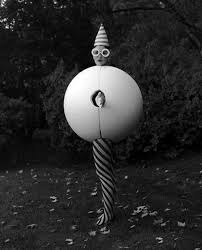 Asymmetry, elegance, beauty and practicality, this describes some of the Bauhaus design curricula. The school emphasized a teaching method that shifted the mindset from competition-focused to a focus on personal potential and universal purpose.
Asymmetry, elegance, beauty and practicality, this describes some of the Bauhaus design curricula. The school emphasized a teaching method that shifted the mindset from competition-focused to a focus on personal potential and universal purpose. 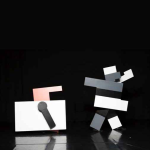 Lead by Walter Gropius, Bauhaus was founded in 1919 in Weimar, Germany. The Bauhaus teaching style resembled a utopian artists’ guild. To set up a new way of living, the Bauhaus taught principles that instituted creative design and technical disciplines. Community living in a unified-designed environment can influence an individual to adopt a more creative design awareness. Design knowledge can add vitality to live a better life. The school moved to Dessau, Germany in 1924. By 1933, the Nazi political party had forced the school to close
Lead by Walter Gropius, Bauhaus was founded in 1919 in Weimar, Germany. The Bauhaus teaching style resembled a utopian artists’ guild. To set up a new way of living, the Bauhaus taught principles that instituted creative design and technical disciplines. Community living in a unified-designed environment can influence an individual to adopt a more creative design awareness. Design knowledge can add vitality to live a better life. The school moved to Dessau, Germany in 1924. By 1933, the Nazi political party had forced the school to close
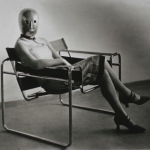
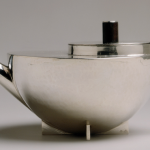 Marcel Breuer and Joseph Albers immigrated to the United States to take teaching positions at Yale. After Walter Gropius went to Harvard, Moholy-Nagy eventually established a New Bauhaus school.
Marcel Breuer and Joseph Albers immigrated to the United States to take teaching positions at Yale. After Walter Gropius went to Harvard, Moholy-Nagy eventually established a New Bauhaus school.
In 1922, Bauhaus principles were introduced in the United States with The Chicago Association of Arts and Industries. The association’s primary purpose was to open a school of design. Funding to initiate the New Bauhaus school was a major problem. Maholy-Nagy’s hard work and persistence eventually led to the opening of The School of Design in 1939. A few years later in 1944, a new board of directors dissolved The School of Design and formed the new Institute of Design. What started out as an artists’ guild and design school with a pedagogical teaching approach in Germany, evolved into one of the most prestigious industrial design graduate schools in the United States, the Illinois Institute of Technology – Institute of Design.
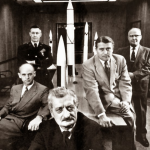 As World War II progressed, the import of other highly regarded Germans was essential to the U.S. war effort. A secret project “Operation Paperclip” involved 88 German scientists and rocket technology production. Other German scientists provided necessary help developing the Atomic Bomb.
As World War II progressed, the import of other highly regarded Germans was essential to the U.S. war effort. A secret project “Operation Paperclip” involved 88 German scientists and rocket technology production. Other German scientists provided necessary help developing the Atomic Bomb.
The video shows a quick fundamental review of the Bauhaus School’s history, philosophy and achievements.
Klee 9000
The Swiss-German Paul Klee (December 18, 1879 – June 29, 1940) taught in Weimar, Germany’s Bauhaus school of art, design, and architecture, with Russian painter Wassily Kandinsky. Klee’s lecture writings, Paul Klee Notebooks, on form and design theory, became one of the most respected in the Modern art movement. Klee’s extensive work in color theory allowed the experimentation to express moods, beliefs, dry humor, and his childlike perspective. In 1919, at the Academy of Art in Stuttgart, Klee created artworks influenced by Expressionism, Cubism, Futurism, Surrealism, and Abstraction. The artwork produced is difficult to categorize because Klee combines and morphs the various art movement styles to create his own. He usually worked alone and analyzed art trends based on his perspective. Klee used inventive methods and techniques to apply many media types to different painting surfaces. Over the years, Klee created about 9000 artworks. The videos combined show a small amount of Klee’s artwork accompanied by music.
Future On Old (updated)
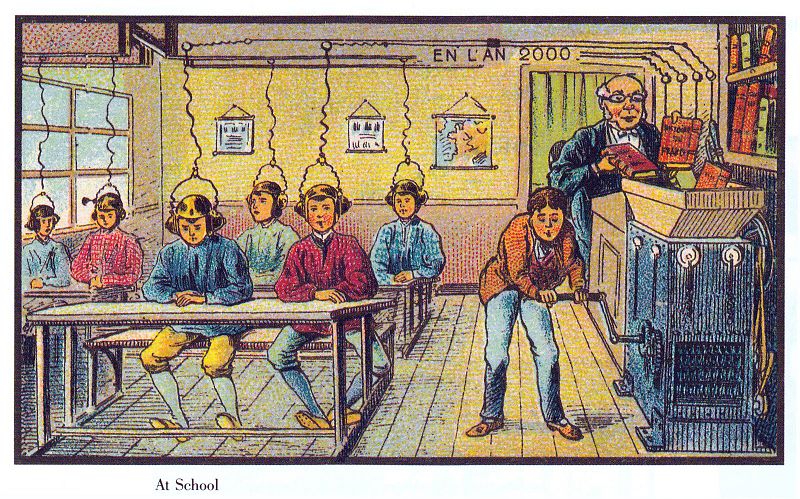 Around the year 1900, various French, German and Russian artists expressed their vision of the next century on small labels and cards. The art created was derived from the artists’ current environmental, social and technological viewpoint. Some of the artworks are very imaginative but departs from what we would think of as practical. The artists illustrated the idea of great and small public flying vehicles. The idea they expressed is not likely to happen at any time in near the future. The artists dreamed of automation and robotics that eliminated hard labor and personal chores to create a better lifestyle. The art shows technology that adds fun to a sport and other social events that take place on the ground, in water and the air. Inventive scenarios of technology, science and industry seem to still have relevance today. It is apparent the artists did not consult fashion designers on what clothes would look like in the future. By today’s standards, the attire that is worn underwater is quite entertaining.
Around the year 1900, various French, German and Russian artists expressed their vision of the next century on small labels and cards. The art created was derived from the artists’ current environmental, social and technological viewpoint. Some of the artworks are very imaginative but departs from what we would think of as practical. The artists illustrated the idea of great and small public flying vehicles. The idea they expressed is not likely to happen at any time in near the future. The artists dreamed of automation and robotics that eliminated hard labor and personal chores to create a better lifestyle. The art shows technology that adds fun to a sport and other social events that take place on the ground, in water and the air. Inventive scenarios of technology, science and industry seem to still have relevance today. It is apparent the artists did not consult fashion designers on what clothes would look like in the future. By today’s standards, the attire that is worn underwater is quite entertaining.
- The acceleration of learning through a book to brain
- Fighting a sea monster
- Architect builds directly with large robotic tools
- Audio dictation anyone?
- This is like “Skype, FaceTime or video conferencing” of today
- A really hot fire that uses Radium as fuel
- All aboard the maglev train to China
- The artwork depicts a scene similar to one from a “MAD MAX” movie. The art is titled “War cars”.
- Safe family fun by spending a Saturday afternoon playing croquet on the bottom of the open sea.
Past Futurism Now
Futurism became one of the most important Italian modern art movements of the early 20th century. Committed to new technology and mobility, its members wanted to change the culture and demonstrate the advancements of modern life. The artists worked in traditional media such as painting and sculpture, in styles influenced by Post-Impressionism. They were interested in embracing popular social subjects, media, and new technologies to communicate their ideas as many artists do today.


